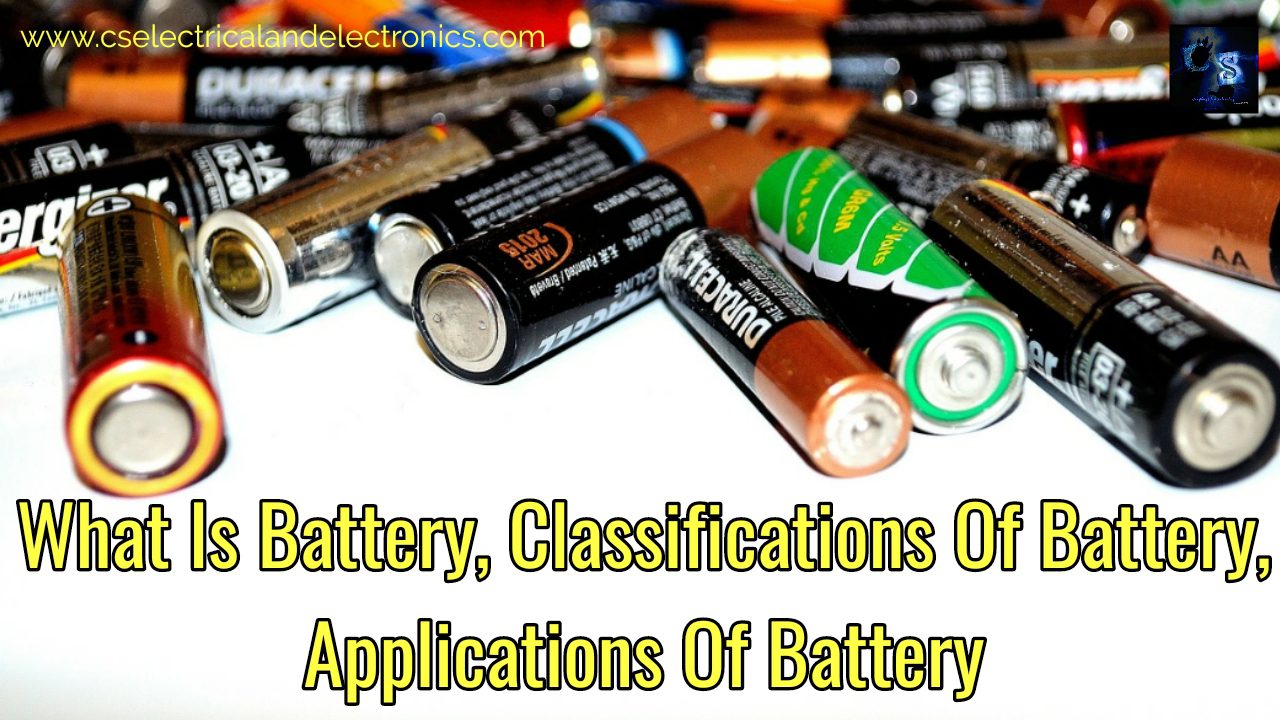What Is Battery, Classifications Of Batteries, Application Of Batteries
Hello guys, welcome back to my blog. In this article, I will discuss what is a battery, the classification of batteries or types of batteries, applications of batteries, etc.
If you want an article on some other topics then comment us below in the comment section. You can also catch me @ Instagram – Click Here.
Also read – Battery Management System Questions And Answers.
What Is Battery
Nowadays, in our day to life, we will see many batteries in and around us. The battery became an important thing in our lives, but many people don’t know why batteries are used. We have only one way to store energy i.e., battery, the battery is only one device that stores energy, we don’t have any storage device for alternating current.
The battery is a device that is used to convert chemical energy into electrical energy or vice-versa. The battery always stores direct current and discharges direct current only.
- The battery is used as a source of current at a constant voltage.
- The battery has one or more electrochemical cells.
- A cell is a device that stores electrical energy in the form of chemical energy and supplies electrical energy.
- The cell is a device in which chemical reactions of charging and discharging take place.
Types Of Batteries
- Primary cell
- Secondary cell
01. Primary cell
The primary battery is one that can not be reused or recharged after the use or discharge. The example of the primary cell is the dry cell which is used in clocks, remotes, toys, etc. The mercury batteries, silver oxide batteries, alkaline batteries, zinc-carbon batteries, etc are some other examples.
The battery consists of manganese dioxide, ammonium chloride, and zinc-chloride paste in place of a solution. The paste is taken in zinc container which acts as anode and the graphite rod placed at the center acts as a cathode. The primary cell is made up of only one cell.
02. Secondary cell
The secondary cell can be reused and recharged after the discharge. The example of secondary cells is lithium batteries, nicked iron cells, nickel-cadmium cells, lead-acid batteries, etc. The secondary cells are also called as storage cells or accumulators. The sulphuric acid is used as an electrolyte in the secondary cell. The number of cells connected in series and the parallel combination is called a battery.
If the number of cells connected in series then the total output voltage will increase, suppose one cell voltage rating is of 2 volts, if we connect 10 cells of 2 volts in series then the total voltage will be 20 volts. If the number of cells connected in parallel then the working hours capacity or current capacity of the cell increases.
Applications Of Batteries
- It is used in digital cameras.
- It is used in remote, toys, clocks, etc.
- It is used in mobile phones, laptops, etc.
- In watches.
- For the domestic purpose, inverter battery.
- Electric cars
I hope this article may help you all a lot. Thank you for reading.
Also, read:
- Comparing Embedded Coder, Simulink Coder, And MATLAB Coder In Automotive Applications
- Every Automotive Engineer Must Have Expertise In These Domains
- Essential Tools For Embedded System Development And Testing
- Advantages Of Digital Twins In Automotive Manufacturing And Vehicle Development
- Cloud-Based HiL Testing: Benefits And Challenges

